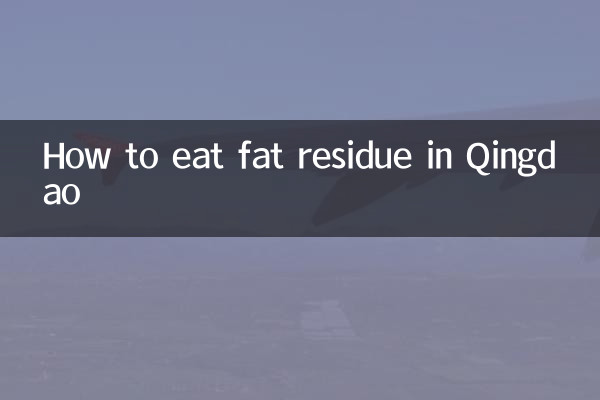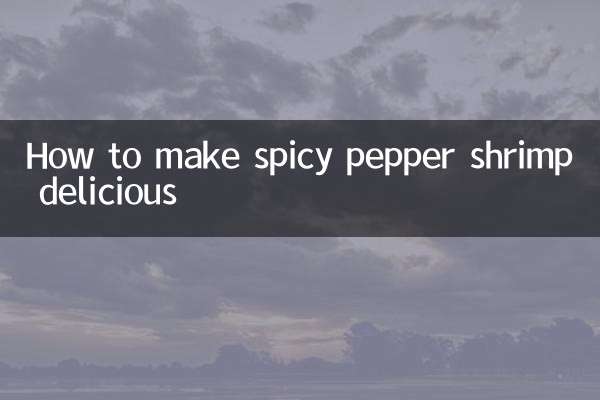How to eat fat residue in Qingdao
Zhizhao is one of the traditional delicacies of Qingdao. It is loved by locals for its crispy, delicious, fat but not greasy characteristics. In the past 10 days, the discussion about fat residue on the Internet has continued to rise, especially about how to eat and mix it. This article will combine recent hot topics to introduce in detail the various ways to eat Qingdao fat residue, and attach structured data to help you better understand this delicious food.
1. Basic introduction to fat residue

Fat residue, also known as "lard residue", is a food made from pork belly after being fried or baked. Qingdao's fat residue is famous for its unique production technology and taste. It is crispy on the outside and tender on the inside, and has a fragrant aroma. Not only can it be eaten directly, but it can also be used as a side dish or condiment to add flavor.
2. Common ways to eat fat residue
According to the hot topics on the Internet in the past 10 days, the following are several common ways to eat fat residue:
| How to eat | describe | Popularity index (1-5 stars) |
|---|---|---|
| Eat directly | After frying, the fat residue can be used directly as a snack, which is crispy and delicious. | ★★★★★ |
| Pair with beer | Qingdao people like to use fat residue with beer, which has a unique flavor. | ★★★★☆ |
| stir-fry | Chop the fat residue and stir-fry it with vegetables to add flavor. | ★★★☆☆ |
| Make soup | The fat residue can be used to make soup, which has a rich flavor and texture. | ★★★☆☆ |
| bibimbap | Crush the fat residue and mix it into the rice, which is full of aroma. | ★★☆☆☆ |
3. Cooking techniques for fat residue
In order to make the fat residue taste better, the following are the cooking tips recently summarized by netizens:
1.Choose high-quality pork belly: The ratio of fat to lean pork belly should be moderate, so that the fried fat residue will be crispy and not greasy.
2.Control oil temperature: If the oil temperature is too high, it will be easy to fry, and if the oil temperature is too low, the fat residue will not be crispy enough. It is recommended that the oil temperature be controlled between 160-180℃.
3.Frying time: The frying time should not be too long, usually 3-5 minutes. Take it out when the fat residue turns golden brown.
4.Drain the oil: Use kitchen paper to absorb the excess oil from the fried fat residue to make it taste better.
4. Nutritional value of fat residue
Although fat residue is a fried food, it also contains certain nutritional value. The following are the main nutrients of fat residue:
| Nutritional information | Content (per 100g) |
|---|---|
| heat | About 500 calories |
| protein | About 15 grams |
| Fat | About 45 grams |
| carbohydrate | About 5 grams |
5. Preservation method of fat residue
Although fat residue is delicious, it can easily deteriorate if not stored properly. The following are the storage methods recommended by netizens:
1.Keep sealed: Put the grease residue into a sealed bag or sealed jar to avoid moisture.
2.Refrigerated storage: If you need to store it for a long time, you can put it in the refrigerator, but it is recommended to eat it as soon as possible.
3.Avoid direct sunlight: Grease residue should be stored in a cool, dry place to avoid deterioration caused by direct sunlight.
6. Conclusion
Qingdao's fat residue is not only a delicacy, but also a cultural heritage. Through the introduction of this article, I believe you will have a deeper understanding of how to eat fat residue and cooking techniques. Whether eaten directly or paired with other ingredients, fat residue can add a unique flavor to your table. Come and try it!

check the details

check the details